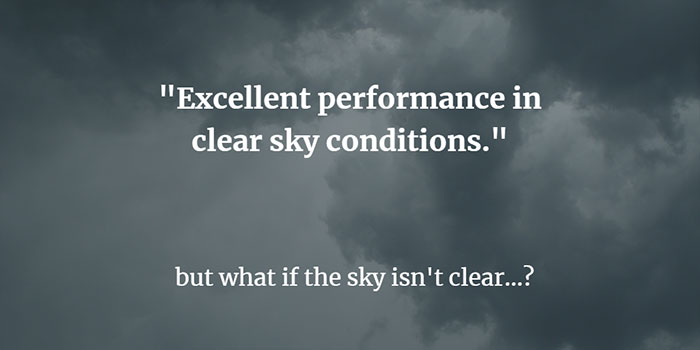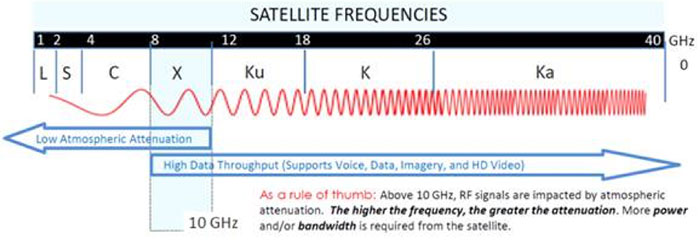Weatherproof – or not?

As satellite operators work to show the benefits of their respective frequency bands, one point of contention comes up again and again; performance in bad weather.
Ideally, the threat of rain, wind or dust storms should not have an impact on critical military communications, but it does. So operators are quick to try and claim that their frequency can work in any challenging environment.
All frequencies can work to mitigate the effects from weather attenuation to some degree. But to do so requires a ‘fix’ that is neither easy nor permanent. Here are four ways that frequencies work to hold signal in poor weather:
Additional Link Margin. The classic approach to mitigating attenuation due to weather is to add additional link margin into the communication link. The amount of link margin required is dependent on frequency, elevation angle, and rain intensity at the terminal location. To maintain link availabilities in the higher frequency bands such as Ku and Ka, several dB of additional link margin must be designed into the link. In X-band a link margin of 1 dB often provides a link availability of greater than 99.5%, sometimes even exceeding 99.9%.
Site Diversity. To negate the effects of weather at hub locations, sometimes network operators employ a technique called site diversity. This is accomplished by building two identical uplink facilities far enough away that the same storm will not affect both sites. If a storm is over one site, the second site will automatically take over. This technique requires not only double the hub equipment, but also cost to connect the two sites and the complexity of a system to control which site will transmit.
Adaptive Coding and Modulation is another potential workaround to avoid poor weather. In this instance, the modulation and coding of a link will automatically adjust (additional error correction coding and less modulation) to attempt to maintain a stable link during a storm. Since constant bandwidth must be maintained, the data rate will decrease, often dramatically. This solution also works, but your quality will suffer, and if you are trying to transmit high bandwidth applications such as video, it might not work at all.
Uplink Power Control. Finally, an operator can increase power at the transmit location to maintain the input power to the satellite, overcome poor weather conditions, and keep the link. But this modification has an obvious implication in ground station costs as the transmit power of the terminal must be sized for the amount of uplink power control desired.
While other frequencies may tout these workarounds as technological advances which enable them to be ‘weatherproof’, it is important to be clear; there is a point at which all of these adjustments stop working in bad weather and the link will eventually be lost. Indeed, each of the above approaches are doable, but they are not totally reliable and each one means an added step in communications protocol along with a sacrifice in signal quality and/or cost efficiency.
Let’s be clear, nothing is 100% weatherproof, but as the graphic below depicts, the position of X-band on the RF spectrum means that it is naturally resistant to the effects of rain, wind and sandstorms – without special modifications, sacrifices to quality, or increases in price.

Finally, to combat the weatherproof issue, X-band often takes an unfair beating when it comes to data rates. Yet in demo after demo XTAR has shown excellent efficiencies and data rates using X-band. Need more proof? Our most recent demonstration from July, 2018 shows high data rates using small terminals. And during the demonstration, heavy rain began to fall with no impact to our link.
No frequency band is perfect and no band is weatherproof, but when a military user faces critical communication needs in a challenging environment, choosing a band that is naturally weather resistant means less hassle, lower cost and better quality to get the job done.